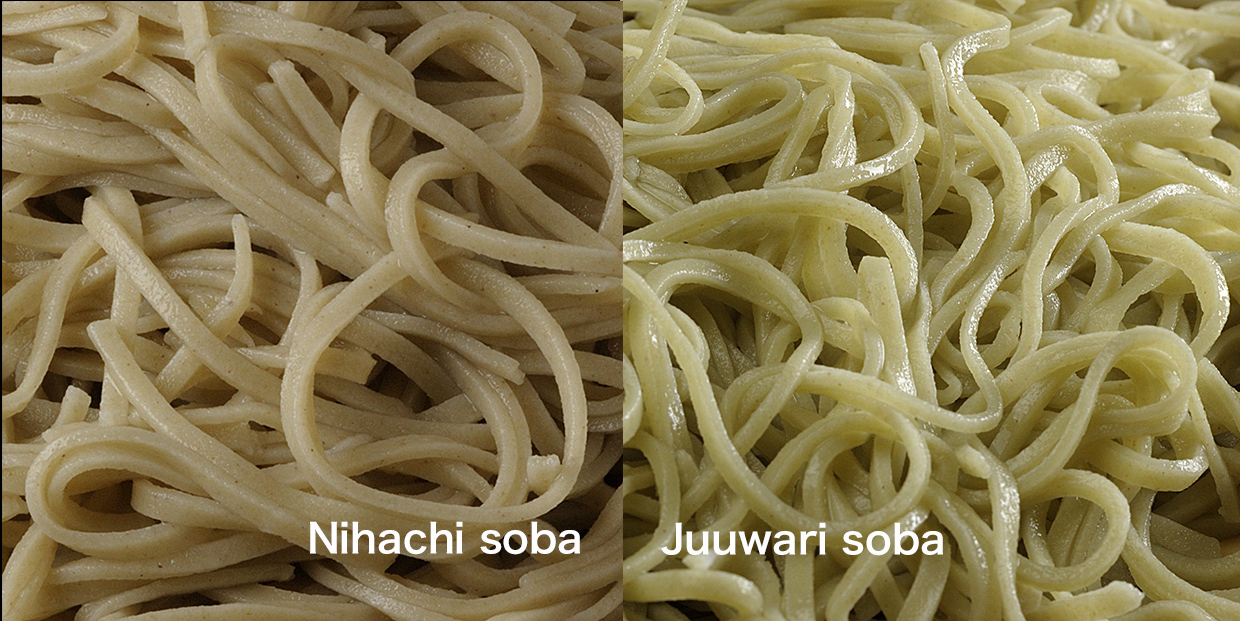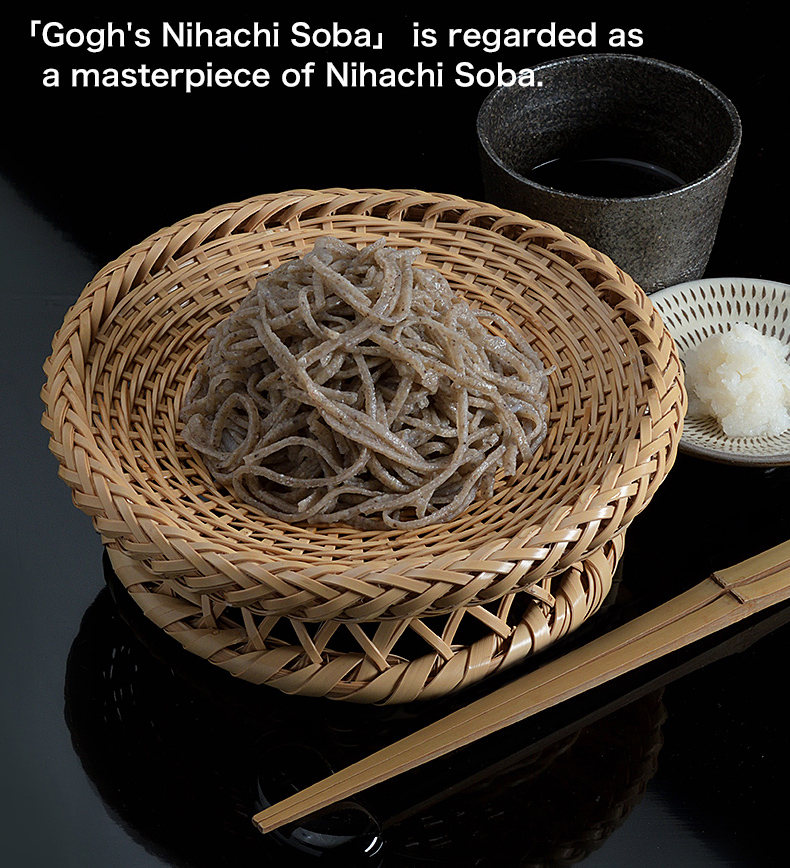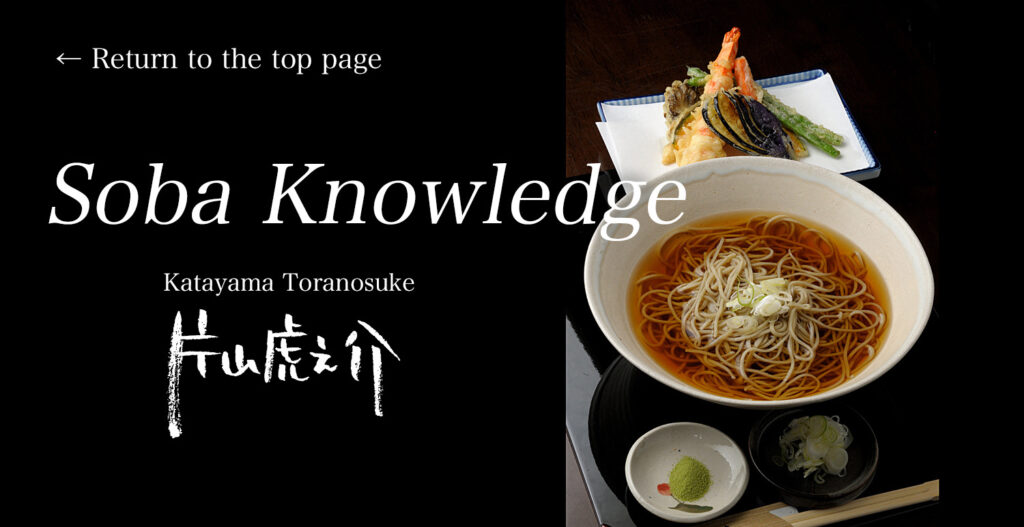
Nihachi Soba is made by mixing buckwheat and wheat flours in the ratio of 8 to 2.
Looking back in history, buckwheat noodles were originally made using only buckwheat flour without wheat flour.
This type of buckwheat noodles is called juuwari soba, and buckwheat noodles made with only buckwheat flour are the original Japanese buckwheat noodles.
However, during the Kanbun period (1661-1673) of the Edo period (1603-1867), people began to mix wheat flour with buckwheat flour, which had deteriorated due to the summer heat.
When wheat flour is mixed in, the gluten power makes it easy to create long, thin noodles. Because it is easy even for unskilled craftsmen, the method of mixing wheat flour spread among soba noodle shops in Edo (present-day Tokyo).
It is recorded that some soba stores offered soba noodles that were 80% wheat flour and 20% buckwheat flour.
Against this trend were skilled buckwheat noodle craftsmen.
They named their own buckwheat noodles “Teuchi-Soba” (handmade buckwheat noodles) because they made the best use of the flavor of the buckwheat flour and made delicious JUUWARI buckwheat noodles.
Today, the term “teuchi-soba” is used in contrast to “machine-made soba,” because of the availability of noodle-making machines, but in the Edo period when the term “teuchi-soba” was first coined, there were no noodle-making machines yet. The reason why the term “Teuchi-Soba” was used is because, when buckwheat noodles were mixed with a lot of flour, kneading required a lot of strength, so the noodles were made by stepping on them with one’s feet, just like udon noodles. A skillful buckwheat noodle maker who made Juuwari Soba coined the name “Teuchi-Soba” to express his pride that “my Soba is made by hand, not by stepping on it with my legs.
Nihachi Soba, which contains wheat flour, can be made in large quantities at a time and sold at a low price. Therefore, nihachi-soba became popular among the common people.
In Japan, nihachi-soba is considered to be for the masses, while juwari-soba is considered to be a luxury type of buckwheat noodle.
Even today, making juuwari-soba requires a high level of skill. Even in the town of Tokyo, there are only a few restaurants that serve juwari soba.
If you want to eat cheap buckwheat noodles casually, you can eat buckwheat noodles with wheat flour, but please do not think that this is the original taste of Japanese buckwheat noodles.
To eat soba in Japan, you need to check many things, such as whether the soba is handmade or machine-made, whether it contains wheat flour, whether it is juuwari soba, and where the soba comes from.
Please be aware of these things and look for and enjoy good soba.
Soba can be good or bad depending on the person who makes it.
Van Gogh’s Nihachi Soba,” which is said to be the masterpiece of Nihachi Soba, is more delicious than Juuwari Soba.
Japanese people call a person who is familiar with soba a “soba connoisseur. A soba connoisseur is a person who is well versed in such matters and can distinguish between good and bad soba.
It is a great compliment to say, “You are a soba connoisseur.
In Japan, people who know about Soba are respected as intelligent people.

Japanese = 二八蕎麦/二八そば
How to read = Nihachi Soba
